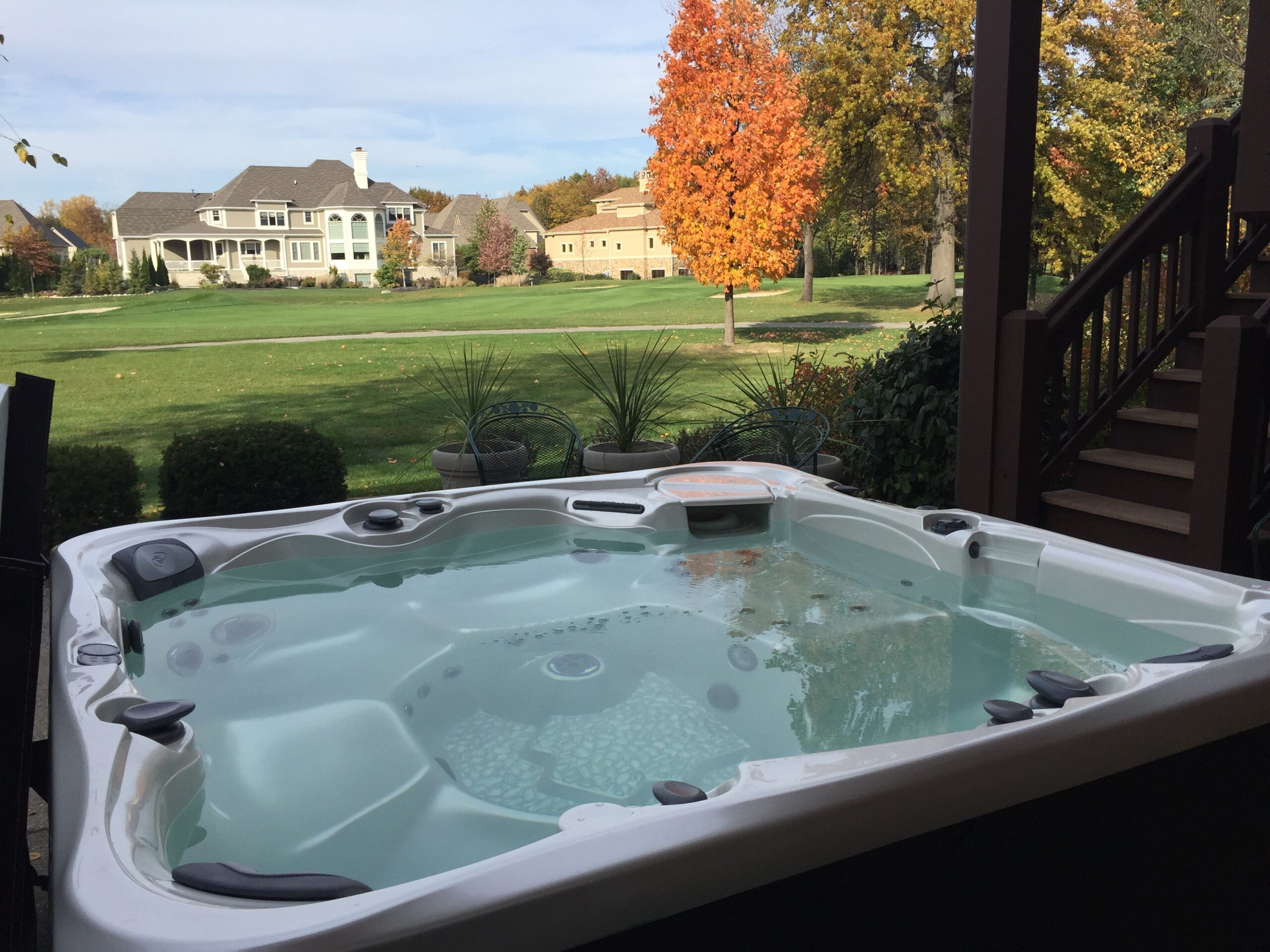
Want to learn more about algaecide? Read on to find out when to add algaecide to your pool maintenance routine and other helpful tips.
Draining your hot tub is key to making sure your hot tub is clean, balanced, and filled with fresh water. Draining your hot tub is a simple process. However, this process can be confusing to some. This article will be especially useful to those new to hot tub maintenance that might need a hand in figuring it all out. That is why on Pool Calculator we are going to detail how to drain a hot tub, and also, how to clean the hot tub once it is empty and eventually refill it.
For more articles on hot tubs, click here.

Draining your hot tub and refilling it with new water is not a task you need to perform often. Usually, hot tubs will need to be drained every three to four months. 3-4 months is the standard across most professional opinions. This is mainly to refresh the water, inspect parts, and scrub the sides of the spa. When you drain your hot tub should ultimately come down to how dirty your spa and its water is. If this means you only need to drain it twice a year so be it. This could also mean you need to drain it once every month or two.
Find the ideal temperature for your hot tub or spa in this article.
Draining your hot tub is a very simple process and only requires a few pieces of equipment. To do the job you will need the following:
Now to the fun stuff! Draining your hot tub is a very straight-forward process. All you will need to do is attach your garden hose to the spigot on your hot tub. Most hot tubs have at least one spigot, and some have multiple for ease of draining.
Hook one end of the hose to the hot tub and have the other end run to an outdoor drain or on a path to the drain. This will allow the dirty water to be transported and disposed of in a simple manner. If you still have leftover water after using the primary spigot, look for a secondary one to capture the rest of the water remaining in the pool.
Tip: Make sure to turn off the circuit breaker for your hot tub or spa before draining. You do not want the jets or pumps to turn on while there is no water in your spa. This could lead to damage to your hot tub or the jets/pump themselves.
After your hot tub has been successfully drained, you can inspect the hot tub itself. Be on the lookout for wear and tear, stains, and malfunctions that could cause the spa to work improperly. This maintenance is vital to keeping your hot tub clean and functional. Without any water it will be easy to clean the hot tub, or get any broken parts fixed.
Cleaning your hot tub is fairly simple. Most sides of hot tubs are designed to be stain and dirt resistant, so a wet washcloth should do the trick. This washcloth and some elbow-grease will rid most stains of their place on the side or bottom of your tub.
Tip: Check to see if there are any chemicals not to use on your hot tub’s surface. This will prevent any further damage to the surfaces and keep you in the know of what you can use to clean the hot tub.
Once you have inspected and cleaned your hot tub, it is time to refill the water back up to normal levels.
Refilling your hot tub is just as easy to do as draining it. You will only need a garden hose to complete this task. Hook the hose up to the water system in your house and run it to the “fill” valve in your hot tub. If you do not have a fill valve you can simply close the spigots and place the other end of the hose in the hot tub itself.
Filling your hot tub without a fill valve could create air bubbles, however. These air bubbles can cause your hot tub and its jets to work improperly and could be costly over time. Always use the fill valve as your primary option when refilling your pool.
Check out our Pool Calculator application here.

Want to learn more about algaecide? Read on to find out when to add algaecide to your pool maintenance routine and other helpful tips.

In this quick guide, we’ll answer the question “can you over shock a pool” and unveil the factors to consider when shocking a pool.

Maintaining both pH and total alkalinity in your swimming pool is important for keeping your pool properly sanitized and non-corrosive. Total alkalinity is to pH what cyanuric acid is to free chlorine. Total alkalinity stabilizes pH levels. The ideal pool pH level is 7.4 to 7.6. The ideal total alkalinity level is 80 to 120 ppm.

The Association of Pool and Spa Professionals recommends free chlorine levels for both swimming pools and hot tubs be kept between 2.0 and 4.0 ppm. However, the Center for Disease Control recommends free chlorine stay above 1 ppm in pools and 3 ppm in hot tubs.